Dalendrien Birds
15th June 2024
Dalendrien House is a private family owned property, which is let out for self catering holidays.
The property is situated on the western shore of Loch Linnhe, a sea loch which is some 50km in length and 2km wide, running from Fort William down to Oban. Overlooking Dalendrien House on the eastern shores of Loch Linnhe is Ben Nevis, which is Britain's highest mountain.
The house is a single storey structure with living room views down Loch Linnhe towards Corran and on towards Oban.
Whilst the living room looks down the loch, the kitchen and dining areas look up at Ben Nevis.
The house is a small "island" surrounded by the Conaglen Estate, and the house is only one of three which is positioned directly onto the shores of the Loch and probably one of the only non estate owned houses in this part of Ardnamurchan.
The house grounds have a couple of stands of pine trees, some mixed fern beds with rocky outcrops and deer, sheep and gardener maintained lawn.
The lawn leads onto a long shingle and rocky beach,a line of gorse bushes forms a border between the lawn and beach and the gorse bushes run east bordering the Conaglen Estate land which also runs down to the beach.
The garden and surrounding land offers a number of habitats for the birds, mammals and reptiles.

A dash of yellow in the Ardnamurchan countryside, the arrival of the Yellowhammers signals that Spring is making it's way north.
Yellowhammers are frequent visitors to the garden and driveway of the house.
The series of photos taken below on the well weathered and rusty barbed wire, this wire has now been replaced by the estate with new deer fencing, the new posts are gradually weathering down and moss is beginning to reclaim the tops of the posts.
A beech hedge has recently been planted on the house side of the drive and this should bring in more wildlife to the garden, so far it surviving the ravages of the local deer population who often come off the hills into the garden to assist with keeping the lawn "manicured".
Willow Warblers are common birds around the property and in particular in the gorse and low shrub thickets. Below is a photograph of one out in the open sitting on the rusty wires of the deer fence in the driveway. In general Willow Warblers are in decline in the UK and are now classified at amber status.

A Dunnock sitting on top of the gorse thicket.

A Willow Warbler takes in the early morning sunshine whilst perched up on the gorse flowers.

A number of Wrens hold territories throughout the grounds of the house - every thicket of shrubs and clump of ferns seem to hold a resident Wren. Often seen singing in the early morning during Spring and in the early evening, continually returning to the same high point whether that be a post, tree branch or stump. The Wren hunts for insects and spiders using its long curved beak to get into the nooks and cracks in the bark of the trees and holes in the ground, along with the Goldcrest it is one of the smallest birds in the UK. Despite it's size it has one of the loudest of the bird songs that you are likely to hear when out and about in the countryside.

Unmissable in the drab early Spring countryside, a bit of early morning sunshine on a Yellowhammer really makes the yellow coloration "pop".

An enigmatic and charming little bird the Long tailed tit, mostly commonly seen in family groups foraging for insects in and around the trees of the property. They continually chatter away to each other and have a looping flight as they move between trees. This one was hunting moths from the fence, it did in fact catch one, but as ever when photographing wildlife, by the time I had focussed the camera it had devoured the moth !!
Close up the Long tailed tit has plumage of whites, blacks and pinks.

A Dunnock with a beak full of nesting material, the stone wall outside the living room usually has at least one bird or another nesting in it.

Off the lawn and onto the beach
A wren singing early in the morning perched on an old weathered tree stump that now resides fallen or washed ashore on the beach.
The beach does have a great collection of driftwood, all sorts of shapes and sizes.

The resident Common Sandpiper off his rocky outcrop roost down on the tideline.

In late spring the beach holds, as do most beaches around Ardnamurchan a good number of Ringed Plover.

The Ringed Plover use the "fine" shingle at the top of the beach to form a small round depression in which they lay up to five eggs. If a predator approaches the nest the bird will walk away from the nest, calling all the time and pretending to have a broken wing, when the predator follows - the Plover flies off !

The main problem for the Plover are the Herring Gulls which drift over the shingle banks searching out the nests looking for an easy meal.

The Common Ringed Plover is a bird designated at red status, a status now held by many of the UK birds. The Little Ringed Plover a bird at green status, can be distinguished from the Ringed Plover as it has an all black beak and large pair of yellow rings around it's eyes.

You do need sharp eyes to spot the eggs which are either just under the edges of the gorse bushes or directly in the middle of the top bank of shingle, quite often all that is left in a very shallow depression in the shingle, with the eggs having being robbed.


In amongst the Plover are small flocks of Dunlin, one of the UKs most common small wading birds, these birds can regularly be seen looking splendid in their breeding plumage, feeding on he shoreline and resting up in between the large pebbles and seaweed.



An otter comes into the bay from time to time mainly at dusk or early morning and usually over the high tide.

I have only ever seen a single otter in the cove at the house - rolling and swimming through the clear water of the loch.
Further around the coastline and into Loch Eil you can at the right time of year watch small family groups of otters.

In the bay and along the foreshore it is not unusual to see a seal who will be curious enough to pop his head out of the water to see what is happening on the beach.
Another "iconic" mammal of the west coast of Scotland is the Pine Marten I have seen them high tailing it past the garage / sheds when returning to the house but never photographed them at the house. Whilst they look great and are very charismatic, they are not the best of house guests some might say !!
During the summer months porpoise come into the loch chasing the mackerel shoals and do provide great views as they can often come quite close to the shore.
At the far end of the beach a chance encounter with a White tailed Eagle - the full story is in the Ardnamurchan Gallery - WTE are not an uncommon sight at the house - the problem is most of the time if you have seen it you have missed the photograph ! On this occasion the WTE obliged by loitering on the post.

Spotted Flycatchers moving between the garden, field and in amongst the oak trees. If not disturbed Spotted Flycatchers will choose a suitable perch to launch themselves at insects from, catching and returning to the same post. They are a migrant bird relatively scarce in the far North, arriving around April and returning to warmer climates for the winter around September.
A good place to hunt for insects is over the grass/ compost pile and this Flycatcher has also taken advantage of a handy perch in the form of a garden rake, from which to hunt insects.


Also helping to keep the insect numbers down are the swallows.

A regular spot for the swallows to rest up is the fence line on the eastern side of the property, swallows along with a number of other birds use the fence to preen, and probably catch some of the early morning sun as the sun comes up from behind the Ben.

A Stag feeding in the garden in the early evening under the cover of the oak tree that stands on the edge of the bank to the loch.

A recently fledged Pied Wagtail one of about 5 or 6 we kept coming across when we where last at the house. They where on the beach, in the house porch, on the lawn, the adult birds where backwards and forwards feeding them and trying to guide them to cover.

When not on the lawn the Pied Wagtails can usually be found hunting between the pebbles for insects.

The outcrop of rocks on the beach by the old slipway provide a regular roosting place for the resident Common Sandpiper. Often seen and heard flying low across the loch from it's vantage point to feed on the shoreline.

A Chaffinch perched on one of the gorse bushes separating the lawn from the beach.

Tree creepers go up and down the trunks of the stand of trees outside the front/ backdoor seeking out insects amongst the bark.

Whilst the Tree creepers use their long beaks to get behind and into the cracks of the bark of the pines, Goldcrest hunt between the pine needles seeking out small insects.

The long claws of the Tree creeper enable them to get a good grip on the bark of the trees, they methodically go up and down each tree before moving onto the next one.
Goldcrests are quite plentiful in those pines, but you do have to look closely for them, about the size of a mouse, and I did read somewhere or other that they weigh about the same as a 10p piece.

Along with the Goldcrests - Long tailed tits also forage in small family groups for insects in between the needles of the trees, flitting between the branches and chattering away to each other.

Blue Tits flit between the trees picking up insects amongst the pines.

A Greenfinch on the gorse, the intensity of the yellow of the gorse flowers reflecting onto the bird.

You can never be sure who you will wake up to see wandering about.
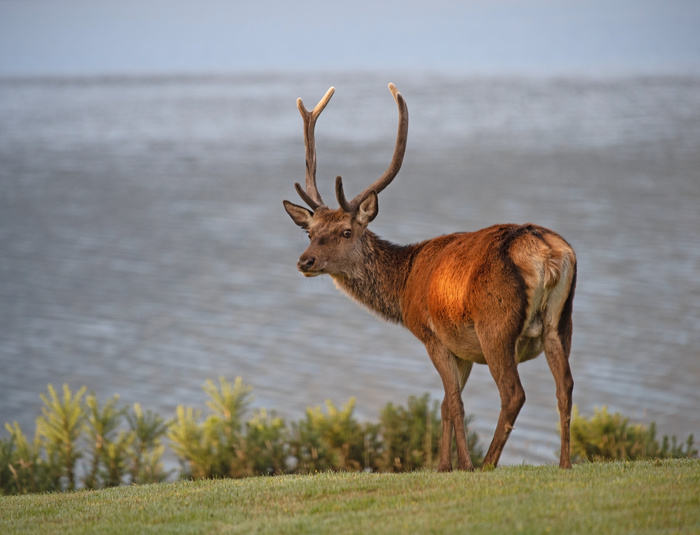
If you need a break from watching the loch, the weather, the Ben and the wildlife you can always take a break wander to the kitchen, make a coffee and watch the next door neighbours whilst the kettle boils.

They can be entertaining.

If you are out and about in that area of Ardnamurchan you can always check the weather here on a webcam down the road at Treslaig.
Finally a couple of permanent feeders are up, this not only provides good views of the many different types of birds that are around and about, but encourages them to stay around the house.
Greater Spotted Woodpeckers are now in and out at the kitchen side of the house, they have always been around the grounds but tended to stay at the top of the huge pine trees on the other side of the house. Certainly a family of Jays have discovered the feeders, they are wary as yet, and may always be so - with at least one or two watching the area around the feeders from the trees opposite, their favourite vantage point for scanning the feeder area is the oak tree by the Loch.
The Sparrowhawk has also added the area to it's "watchlist" - a handsome looking bird who made a couple of failed attempts for a "take-away" Chaffinch - always around 5pm, and could be watched fence post hopping in the fields opposite.
The two "star" arrivals though has to the Red Squirrels. Great to see them make an appearance and hopefully they stay as regular visitors. A few hazelnuts and the like in the long grass had them staying around for most of the day, searching through the "wild" area, disappearing off to cache the hazelnuts in shells.
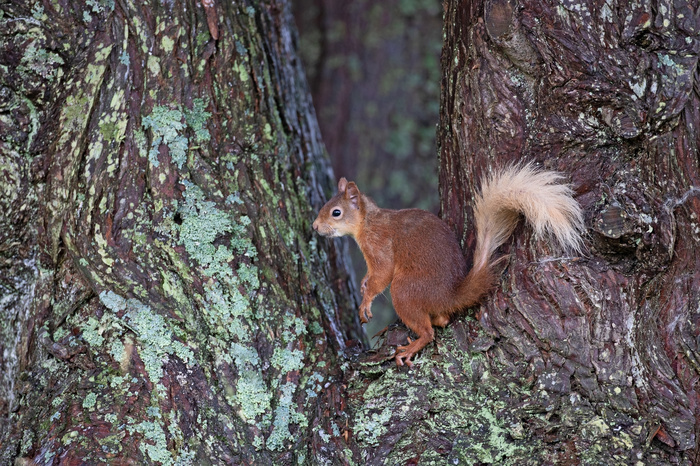
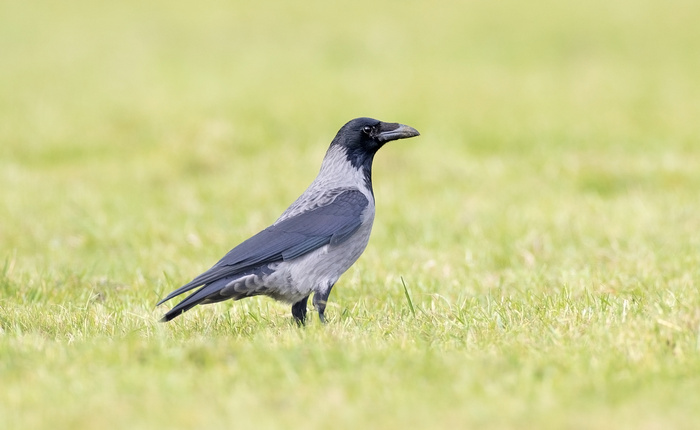
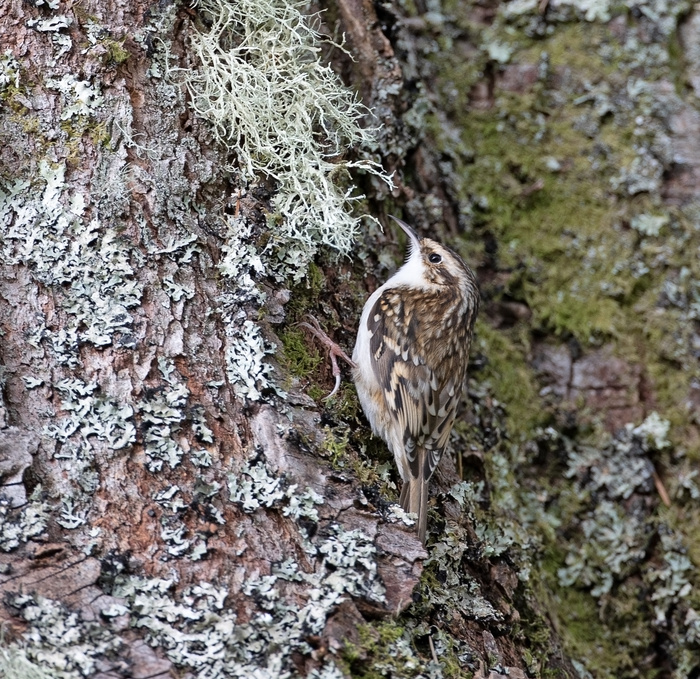
A couple of returns to the house yielded little in the way of photographs, but a return in May, one of my favourite months along with October, enable the capture of some of the Spring activity, the holiday is a family affair with photography opportunities taken as and when.
I say Spring but in actual fact the trip coincided with the end of Spring and the beginning of summer, but the weather was somewhat bizarre, but better for sure than it was down in England (and that's ok with me !) From snow on the top of Ben Nevis and the peaks of Glencoe, to multiple rainbows over the Fort as the weather systems blew up the Lochs Linnhe and Eil and dumped their contents of light rain, snow and sleet, followed by blazing sunshine onto Fort Willian and all the while the western side of Loch Linnhe remained in sunshine, shorts and t-short weather unless you went over the Loch !!
The idea of this blog was for pictures taken either in the Dalendrien house grounds or from the house beach, and there is still a good few shots to get.
Whilst toasting marshmallows on the beach with Tom, there was a splash in the loch, initially I only half paid attention as the "local" seal had been in the bay when we arrived on the beach sliding under the dark waters of the loch, and I had made the assumption initially that the seal was simply hitting the water with it's tail, which it had been doing on previous visits.
Looking up there was a scene which could have come from "Alien" with a decent size Thornback ray floating in the air, obviously the seal having hold it from underneath, the rays tail thrashing about.
As this was taking place mid-morning the seal was into the sun and we where high up the beach, leaving Tom to finish off his Marshmallows I made my way down the beach trying to get the light from behind me or at least from the side, moving across the shingle every time the seals vision was obscured by the ray or when it submerged. Eventually I got a reasonable position and was able to get a few shots, the initial aerial ray shots now firmly consigned to the recycle bin.
So a couple of shots of a seal with a ray.
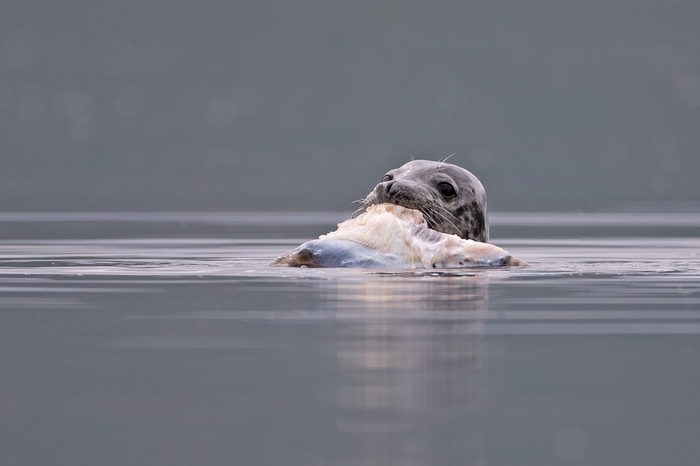
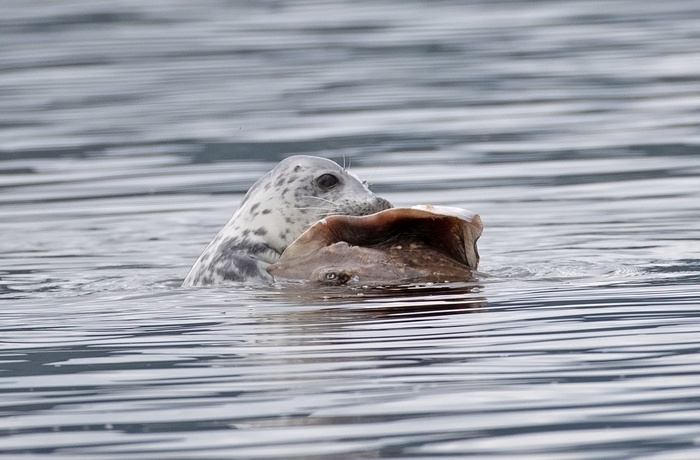

A female Merganser doing a flypast of the beach in the evening sunshine.
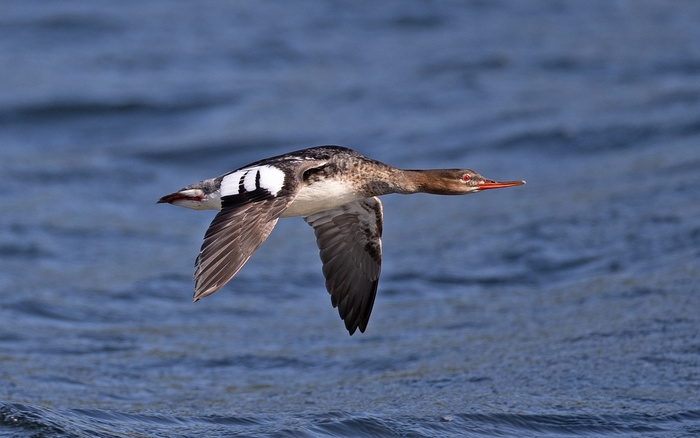
The feeders are doing their work and attract a large variety of finches and other small birds. whilst the squirrels have disappeared for the moment from the garden, mallards have moved in and are getting fatter on the scraps they hoover up from beneath the feeders.
Two males and a female with a further drake who sits off down the lawn, perhaps waiting to chance his luck with the female, who really should be on eggs at this time of year, the two males spend less time feeding and more time wrestling each other, each trying to assert their dominance and move the other bird on and away from the female. The arrive as trio and disappear off the down the loch as a trio.
A pair of Collared doves sit about on the fence posts opposite the kitchen window.
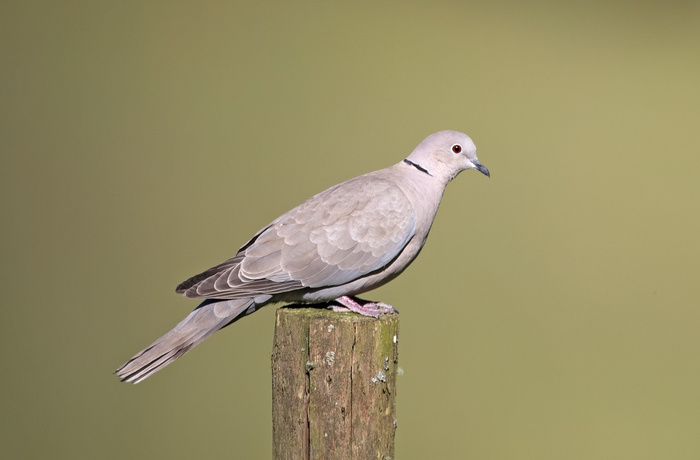
Flighty birds but nowhere near as flighty as the Greater Spotted Woodpecker, whose photo off the feeder and in decent light has yet to be achieved. The adults brought in juvenile GSW which spent a lot of time on the ground which could have made a good photo but not this time !
Ringed Plover and the odd Dunlin feed along the shoreline, the Ringed Plover next in the shingle under the Gorse bushes lining the beach above the high tide line.
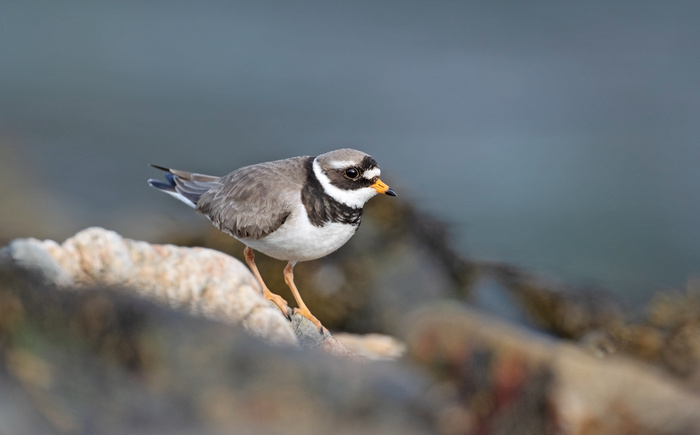
The property is situated on the western shore of Loch Linnhe, a sea loch which is some 50km in length and 2km wide, running from Fort William down to Oban. Overlooking Dalendrien House on the eastern shores of Loch Linnhe is Ben Nevis, which is Britain's highest mountain.
The house is a single storey structure with living room views down Loch Linnhe towards Corran and on towards Oban.
Whilst the living room looks down the loch, the kitchen and dining areas look up at Ben Nevis.
The house is a small "island" surrounded by the Conaglen Estate, and the house is only one of three which is positioned directly onto the shores of the Loch and probably one of the only non estate owned houses in this part of Ardnamurchan.
The house grounds have a couple of stands of pine trees, some mixed fern beds with rocky outcrops and deer, sheep and gardener maintained lawn.
The lawn leads onto a long shingle and rocky beach,a line of gorse bushes forms a border between the lawn and beach and the gorse bushes run east bordering the Conaglen Estate land which also runs down to the beach.
The garden and surrounding land offers a number of habitats for the birds, mammals and reptiles.

A dash of yellow in the Ardnamurchan countryside, the arrival of the Yellowhammers signals that Spring is making it's way north.
Yellowhammers are frequent visitors to the garden and driveway of the house.
The series of photos taken below on the well weathered and rusty barbed wire, this wire has now been replaced by the estate with new deer fencing, the new posts are gradually weathering down and moss is beginning to reclaim the tops of the posts.
A beech hedge has recently been planted on the house side of the drive and this should bring in more wildlife to the garden, so far it surviving the ravages of the local deer population who often come off the hills into the garden to assist with keeping the lawn "manicured".
Willow Warblers are common birds around the property and in particular in the gorse and low shrub thickets. Below is a photograph of one out in the open sitting on the rusty wires of the deer fence in the driveway. In general Willow Warblers are in decline in the UK and are now classified at amber status.

A Dunnock sitting on top of the gorse thicket.

A Willow Warbler takes in the early morning sunshine whilst perched up on the gorse flowers.

A number of Wrens hold territories throughout the grounds of the house - every thicket of shrubs and clump of ferns seem to hold a resident Wren. Often seen singing in the early morning during Spring and in the early evening, continually returning to the same high point whether that be a post, tree branch or stump. The Wren hunts for insects and spiders using its long curved beak to get into the nooks and cracks in the bark of the trees and holes in the ground, along with the Goldcrest it is one of the smallest birds in the UK. Despite it's size it has one of the loudest of the bird songs that you are likely to hear when out and about in the countryside.

Unmissable in the drab early Spring countryside, a bit of early morning sunshine on a Yellowhammer really makes the yellow coloration "pop".

An enigmatic and charming little bird the Long tailed tit, mostly commonly seen in family groups foraging for insects in and around the trees of the property. They continually chatter away to each other and have a looping flight as they move between trees. This one was hunting moths from the fence, it did in fact catch one, but as ever when photographing wildlife, by the time I had focussed the camera it had devoured the moth !!
Close up the Long tailed tit has plumage of whites, blacks and pinks.

A Dunnock with a beak full of nesting material, the stone wall outside the living room usually has at least one bird or another nesting in it.

Off the lawn and onto the beach
A wren singing early in the morning perched on an old weathered tree stump that now resides fallen or washed ashore on the beach.
The beach does have a great collection of driftwood, all sorts of shapes and sizes.

The resident Common Sandpiper off his rocky outcrop roost down on the tideline.

In late spring the beach holds, as do most beaches around Ardnamurchan a good number of Ringed Plover.

The Ringed Plover use the "fine" shingle at the top of the beach to form a small round depression in which they lay up to five eggs. If a predator approaches the nest the bird will walk away from the nest, calling all the time and pretending to have a broken wing, when the predator follows - the Plover flies off !

The main problem for the Plover are the Herring Gulls which drift over the shingle banks searching out the nests looking for an easy meal.

The Common Ringed Plover is a bird designated at red status, a status now held by many of the UK birds. The Little Ringed Plover a bird at green status, can be distinguished from the Ringed Plover as it has an all black beak and large pair of yellow rings around it's eyes.

You do need sharp eyes to spot the eggs which are either just under the edges of the gorse bushes or directly in the middle of the top bank of shingle, quite often all that is left in a very shallow depression in the shingle, with the eggs having being robbed.


In amongst the Plover are small flocks of Dunlin, one of the UKs most common small wading birds, these birds can regularly be seen looking splendid in their breeding plumage, feeding on he shoreline and resting up in between the large pebbles and seaweed.



An otter comes into the bay from time to time mainly at dusk or early morning and usually over the high tide.

I have only ever seen a single otter in the cove at the house - rolling and swimming through the clear water of the loch.
Further around the coastline and into Loch Eil you can at the right time of year watch small family groups of otters.

In the bay and along the foreshore it is not unusual to see a seal who will be curious enough to pop his head out of the water to see what is happening on the beach.
Another "iconic" mammal of the west coast of Scotland is the Pine Marten I have seen them high tailing it past the garage / sheds when returning to the house but never photographed them at the house. Whilst they look great and are very charismatic, they are not the best of house guests some might say !!
During the summer months porpoise come into the loch chasing the mackerel shoals and do provide great views as they can often come quite close to the shore.
At the far end of the beach a chance encounter with a White tailed Eagle - the full story is in the Ardnamurchan Gallery - WTE are not an uncommon sight at the house - the problem is most of the time if you have seen it you have missed the photograph ! On this occasion the WTE obliged by loitering on the post.

Spotted Flycatchers moving between the garden, field and in amongst the oak trees. If not disturbed Spotted Flycatchers will choose a suitable perch to launch themselves at insects from, catching and returning to the same post. They are a migrant bird relatively scarce in the far North, arriving around April and returning to warmer climates for the winter around September.
A good place to hunt for insects is over the grass/ compost pile and this Flycatcher has also taken advantage of a handy perch in the form of a garden rake, from which to hunt insects.


Also helping to keep the insect numbers down are the swallows.

A regular spot for the swallows to rest up is the fence line on the eastern side of the property, swallows along with a number of other birds use the fence to preen, and probably catch some of the early morning sun as the sun comes up from behind the Ben.

A Stag feeding in the garden in the early evening under the cover of the oak tree that stands on the edge of the bank to the loch.

A recently fledged Pied Wagtail one of about 5 or 6 we kept coming across when we where last at the house. They where on the beach, in the house porch, on the lawn, the adult birds where backwards and forwards feeding them and trying to guide them to cover.

When not on the lawn the Pied Wagtails can usually be found hunting between the pebbles for insects.

The outcrop of rocks on the beach by the old slipway provide a regular roosting place for the resident Common Sandpiper. Often seen and heard flying low across the loch from it's vantage point to feed on the shoreline.

A Chaffinch perched on one of the gorse bushes separating the lawn from the beach.

Tree creepers go up and down the trunks of the stand of trees outside the front/ backdoor seeking out insects amongst the bark.

Whilst the Tree creepers use their long beaks to get behind and into the cracks of the bark of the pines, Goldcrest hunt between the pine needles seeking out small insects.

The long claws of the Tree creeper enable them to get a good grip on the bark of the trees, they methodically go up and down each tree before moving onto the next one.
Goldcrests are quite plentiful in those pines, but you do have to look closely for them, about the size of a mouse, and I did read somewhere or other that they weigh about the same as a 10p piece.

Along with the Goldcrests - Long tailed tits also forage in small family groups for insects in between the needles of the trees, flitting between the branches and chattering away to each other.

Blue Tits flit between the trees picking up insects amongst the pines.

A Greenfinch on the gorse, the intensity of the yellow of the gorse flowers reflecting onto the bird.

You can never be sure who you will wake up to see wandering about.

If you need a break from watching the loch, the weather, the Ben and the wildlife you can always take a break wander to the kitchen, make a coffee and watch the next door neighbours whilst the kettle boils.

They can be entertaining.

If you are out and about in that area of Ardnamurchan you can always check the weather here on a webcam down the road at Treslaig.
Finally a couple of permanent feeders are up, this not only provides good views of the many different types of birds that are around and about, but encourages them to stay around the house.
Greater Spotted Woodpeckers are now in and out at the kitchen side of the house, they have always been around the grounds but tended to stay at the top of the huge pine trees on the other side of the house. Certainly a family of Jays have discovered the feeders, they are wary as yet, and may always be so - with at least one or two watching the area around the feeders from the trees opposite, their favourite vantage point for scanning the feeder area is the oak tree by the Loch.
The Sparrowhawk has also added the area to it's "watchlist" - a handsome looking bird who made a couple of failed attempts for a "take-away" Chaffinch - always around 5pm, and could be watched fence post hopping in the fields opposite.
The two "star" arrivals though has to the Red Squirrels. Great to see them make an appearance and hopefully they stay as regular visitors. A few hazelnuts and the like in the long grass had them staying around for most of the day, searching through the "wild" area, disappearing off to cache the hazelnuts in shells.



A couple of returns to the house yielded little in the way of photographs, but a return in May, one of my favourite months along with October, enable the capture of some of the Spring activity, the holiday is a family affair with photography opportunities taken as and when.
I say Spring but in actual fact the trip coincided with the end of Spring and the beginning of summer, but the weather was somewhat bizarre, but better for sure than it was down in England (and that's ok with me !) From snow on the top of Ben Nevis and the peaks of Glencoe, to multiple rainbows over the Fort as the weather systems blew up the Lochs Linnhe and Eil and dumped their contents of light rain, snow and sleet, followed by blazing sunshine onto Fort Willian and all the while the western side of Loch Linnhe remained in sunshine, shorts and t-short weather unless you went over the Loch !!
The idea of this blog was for pictures taken either in the Dalendrien house grounds or from the house beach, and there is still a good few shots to get.
Whilst toasting marshmallows on the beach with Tom, there was a splash in the loch, initially I only half paid attention as the "local" seal had been in the bay when we arrived on the beach sliding under the dark waters of the loch, and I had made the assumption initially that the seal was simply hitting the water with it's tail, which it had been doing on previous visits.
Looking up there was a scene which could have come from "Alien" with a decent size Thornback ray floating in the air, obviously the seal having hold it from underneath, the rays tail thrashing about.
As this was taking place mid-morning the seal was into the sun and we where high up the beach, leaving Tom to finish off his Marshmallows I made my way down the beach trying to get the light from behind me or at least from the side, moving across the shingle every time the seals vision was obscured by the ray or when it submerged. Eventually I got a reasonable position and was able to get a few shots, the initial aerial ray shots now firmly consigned to the recycle bin.
So a couple of shots of a seal with a ray.



A female Merganser doing a flypast of the beach in the evening sunshine.

The feeders are doing their work and attract a large variety of finches and other small birds. whilst the squirrels have disappeared for the moment from the garden, mallards have moved in and are getting fatter on the scraps they hoover up from beneath the feeders.
Two males and a female with a further drake who sits off down the lawn, perhaps waiting to chance his luck with the female, who really should be on eggs at this time of year, the two males spend less time feeding and more time wrestling each other, each trying to assert their dominance and move the other bird on and away from the female. The arrive as trio and disappear off the down the loch as a trio.
A pair of Collared doves sit about on the fence posts opposite the kitchen window.

Flighty birds but nowhere near as flighty as the Greater Spotted Woodpecker, whose photo off the feeder and in decent light has yet to be achieved. The adults brought in juvenile GSW which spent a lot of time on the ground which could have made a good photo but not this time !
Ringed Plover and the odd Dunlin feed along the shoreline, the Ringed Plover next in the shingle under the Gorse bushes lining the beach above the high tide line.

Comments
 By Nicki Makris: Graham, it is so lovely looking at your beautiful photographs around Dalendrien. I miss the house very much and your very variety of wildlife you have captured make me feel close to the house. The eagle is amazing, I hope it becomes a favourite perch. Thank you for your stunning photos.
By Nicki Makris: Graham, it is so lovely looking at your beautiful photographs around Dalendrien. I miss the house very much and your very variety of wildlife you have captured make me feel close to the house. The eagle is amazing, I hope it becomes a favourite perch. Thank you for your stunning photos. By Annette Ali: Just had two weeks at Dalendrien and have read your visitors book entry so had a look at your photos. Wonderful images and so glad to be returning next year to see what we can spot . Thank you .
By Annette Ali: Just had two weeks at Dalendrien and have read your visitors book entry so had a look at your photos. Wonderful images and so glad to be returning next year to see what we can spot . Thank you . By Joan: What a wonderful collection of wildlife photographs
By Joan: What a wonderful collection of wildlife photographs